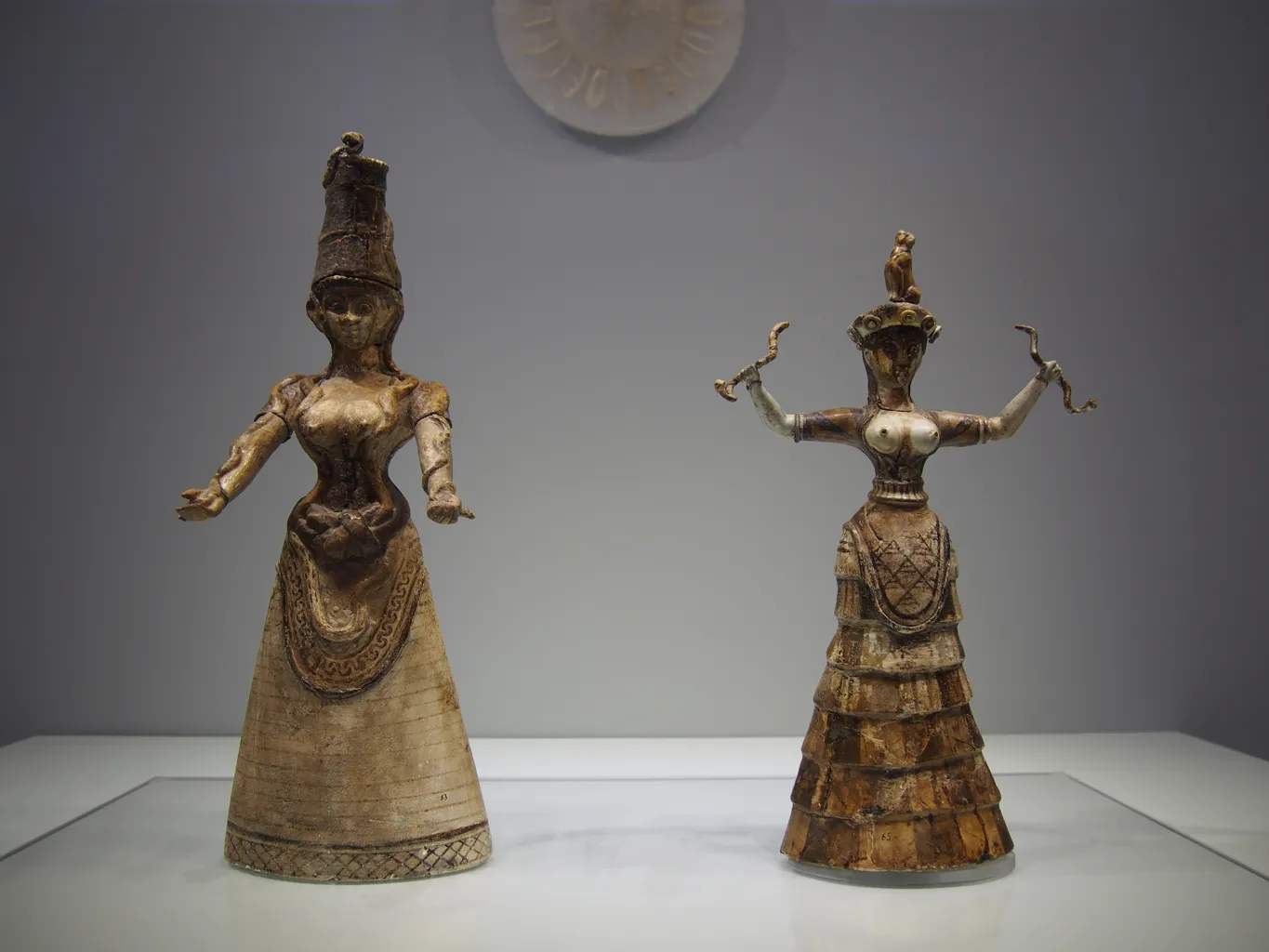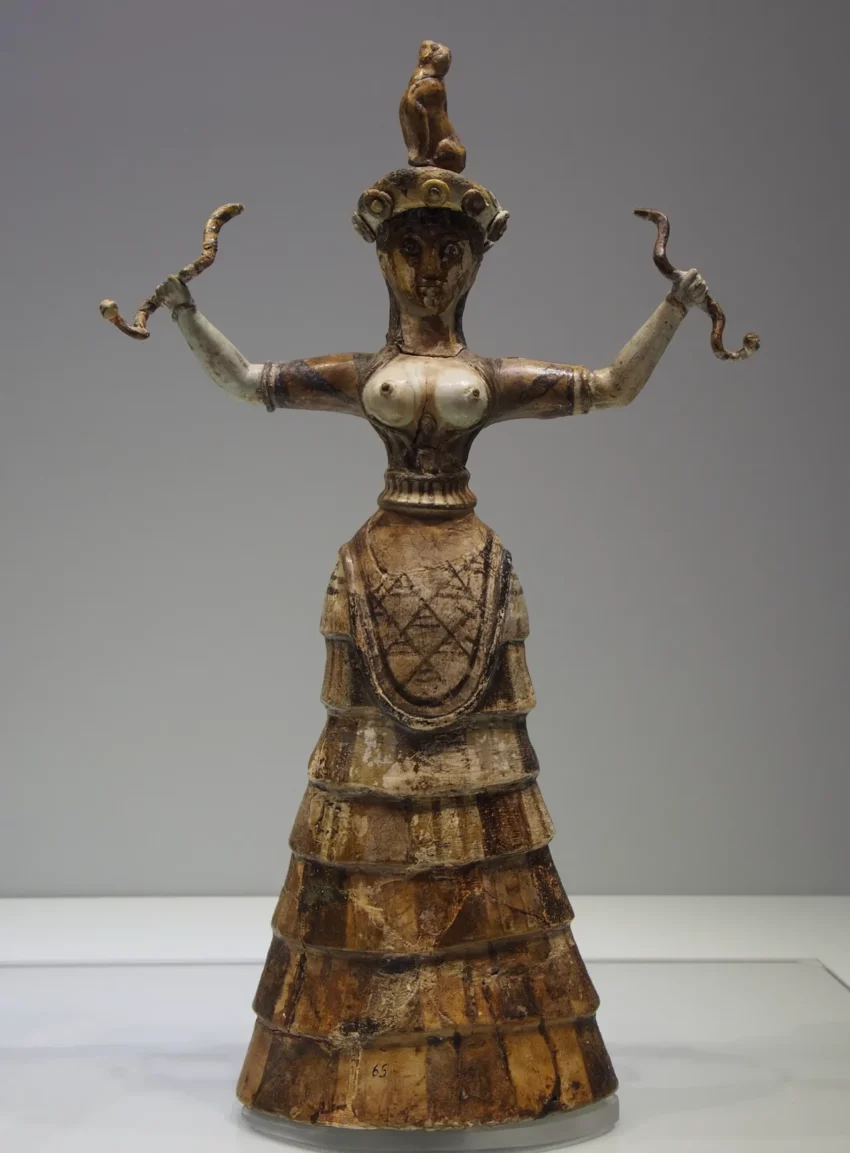The Minoan Snake Goddess Figurines: A Closer Look
In 1903, archaeologist Arthur Evans uncovered two remarkable figurines at the Minoan palace in Knossos, Crete. These faience figures have since sparked intrigue and debate among scholars. Evans dubbed the larger figurine a “Snake Goddess” and the smaller one a “Snake Priestess.” But over time, experts have questioned Evans’ interpretations, and even the objects’ restorations have come under scrutiny.
Get your dose of History via Email
Evans and His Influence on Minoan Archaeology
Arthur Evans’ extensive excavations at Knossos were instrumental in shedding light on the Bronze Age Minoan civilization. However, his tendency to over-interpret findings and make speculative restorations has drawn criticism. One of the most famous examples is his “restoration” of the Snake Goddess figurines, which are now displayed in the Heraklion Archaeological Museum.
While these figures have become iconic representations of Minoan art and religion, there’s a growing sense that Evans may have been too eager to label them as deities. Some scholars argue that the figurines could represent priestesses or have a less divine role. Despite this, the imagery of the bare-breasted woman holding snakes has persisted as a popular symbol of ancient Crete.
The Figurines Themselves
The two figurines, found in what Evans called “Temple Repositories,” were badly damaged. Made of faience, a material symbolic of life renewal in ancient Egypt, these objects would have had a bright, glossy appearance. The larger figure appears to have snakes coiling around her arms, rising to a crown atop her head, though many parts of her body, including below the waist, are missing. The prominent display of her bare breasts led many to associate the figure with fertility.
The smaller figure, also missing parts when found, holds two snakes and has an animal, perhaps a cat or panther, on her head. Much of her head and arm were reconstructed by Evans and his team, further complicating efforts to determine the figurine’s original appearance. Some archaeologists now question if the animal on her headdress or even the snakes were part of the original figure.

A Symbol of Fertility or Something Else?
The fascination with these figures often centers around the role of the snake in ancient belief systems. Snakes were commonly associated with renewal because they shed their skin, symbolizing rebirth. In Minoan religion, they might have represented household protection, a belief later reflected in Greek tradition. Alternatively, the snake imagery could connect to fertility and domesticity, similar to motifs found in other ancient cultures, including the Paleolithic.
Some interpretations have even linked the Snake Goddess to figures like Athena or the Phoenician goddess Astarte. Evans himself tentatively connected the figurines to the Egyptian snake goddess Wadjet, though this idea wasn’t widely pursued.
Were They Really Holding Snakes?
One of the most contested aspects of these figurines is the idea that they were snake-handlers. Recent studies suggest that what Evans interpreted as snakes might not have been snakes at all. Instead, some scholars propose the figurines could be holding cords or ropes, common in Syrian iconography, which might have influenced Minoan art. Archaeologist Emily Bonney argues that the figurine’s raised arms and what Evans identified as snakes could represent the goddess revealing her sexuality by holding open her garment.
The Impact of Fakes
The excitement surrounding the discovery of the Snake Goddess led to the creation of forgeries. Museums, eager to add Minoan pieces to their collections, were occasionally duped. The Boston Museum of Fine Arts, for example, acquired a now-discredited figurine made of ivory and gold, while the Walters Art Museum in Baltimore holds another probable fake with snakes engraved on the figure’s headdress.
Interpretations and Misinterpretations
While Evans’ original interpretation of the Snake Goddess as a deity remains popular, modern scholars often offer more nuanced views. For instance, Burkert relates the figurines to domestic life, while others see a connection to fertility. Some, like Barry Powell, suggest the Snake Goddess may represent Ariadne, a figure from Greek mythology often depicted with followers of Dionysus.
Conclusion
The Snake Goddess figurines remain enigmatic artifacts of the Minoan civilization. While Evans’ work brought these objects to global attention, it’s clear that his interpretations are not without flaws. As more scholars study these figures, our understanding of Minoan religion and culture continues to evolve. Whether deity, priestess, or symbol of fertility, the Minoan Snake Goddess will likely continue to inspire debate for generations to come.
Sources:

